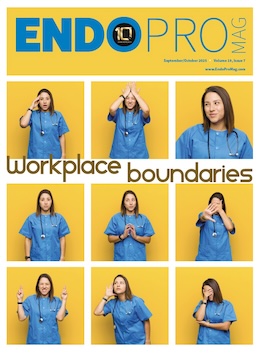A multicenter observational study from the German healthcare system suggested that the annual waste generated by endoscopy in hospitals and outpatient settings in the country is roughly equivalent to the waste produced by a small town. The study details follow.
Background: Endoscopic procedures are a notable source of medical waste, contributing significantly to environmental pollution. Prior studies report 0.5–3.0 kg of waste per procedure—compared with just 1.2 kg of household waste generated per person per day in Germany.
Objective: To quantify endoscopic waste in hospitals and outpatient settings, assess its impact on the healthcare system and identify strategies for reduction.
Design: This prospective, multicenter, observational study was conducted over four weeks in two tertiary hospitals and two gastroenterology offices. Waste from 2,275 patients across 2889 procedures was collected, sorted, weighed and categorized for recyclability. National waste generation from GI endoscopy was estimated using published insurance data.
Results: The average waste per procedure was 1,119 g (hospitals: 1167 g; offices: 1094 g). Office-based procedures produced significantly less waste than their hospital counterparts—by 51% for esophagogastroduodenoscopy (EGD), 50% for colonoscopy, 47% for combined procedures and 69% for sigmoidoscopy (all p<0.001). Performing consecutive procedures reduced waste by up to 39% for EGD and colonoscopy, and 33% for endoscopic ultrasound and endoscopic retrograde cholangiopancreatography.
Switching from single-use to reusable gowns could reduce personal protective equipment waste by 54%. Overall, 23% of waste was potentially recyclable. Nationally, GI endoscopy generates an estimated 8024 tons of waste annually—equivalent to the yearly household waste of 18, 533 German citizens.
Conclusion: The waste generated by endoscopy per year in Germany rivals that of a small town. Adopting targeted waste reduction strategies—focusing on prevention, reduction, reuse, recycling and recovery—can substantially mitigate the environmental footprint of endoscopic practice.







